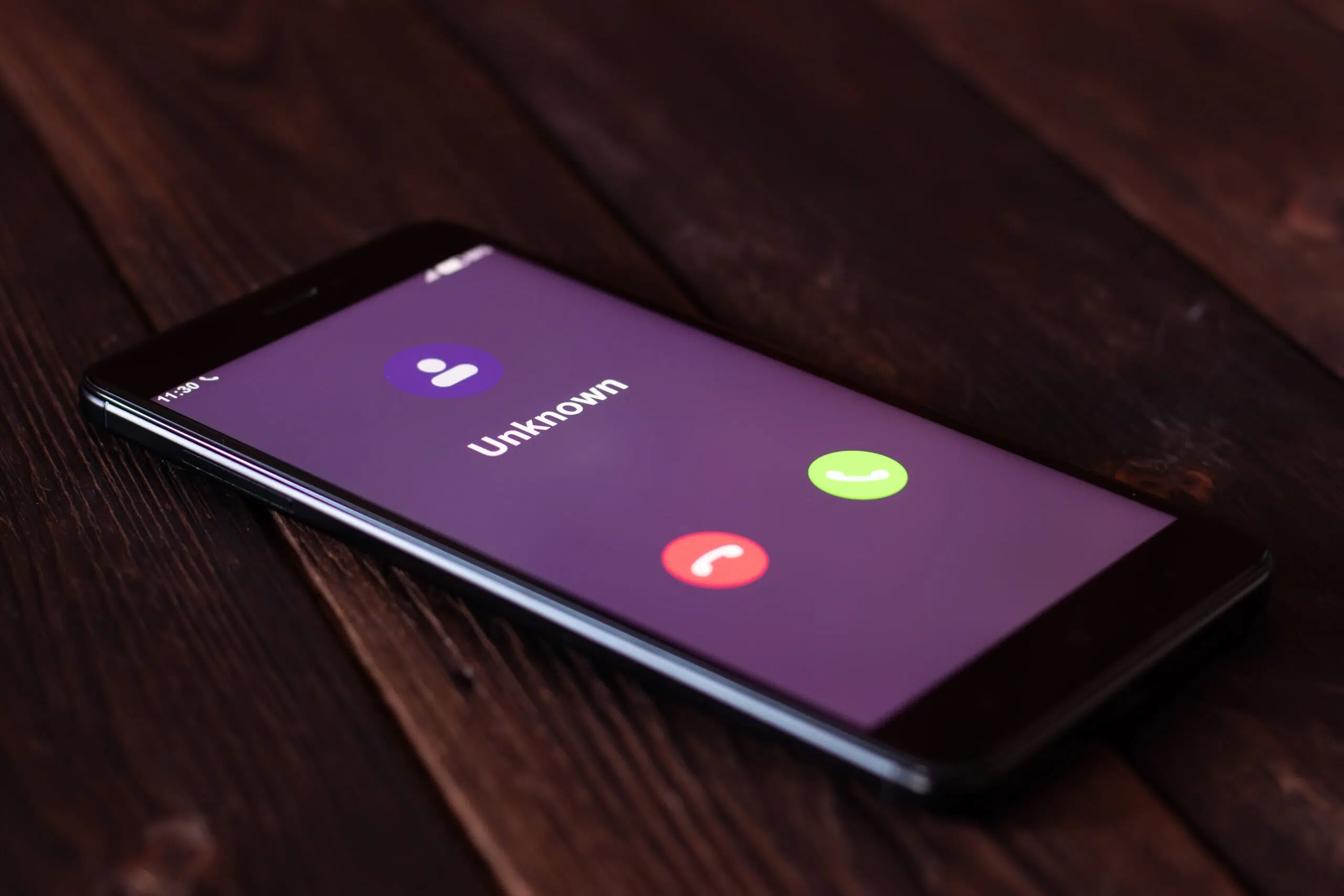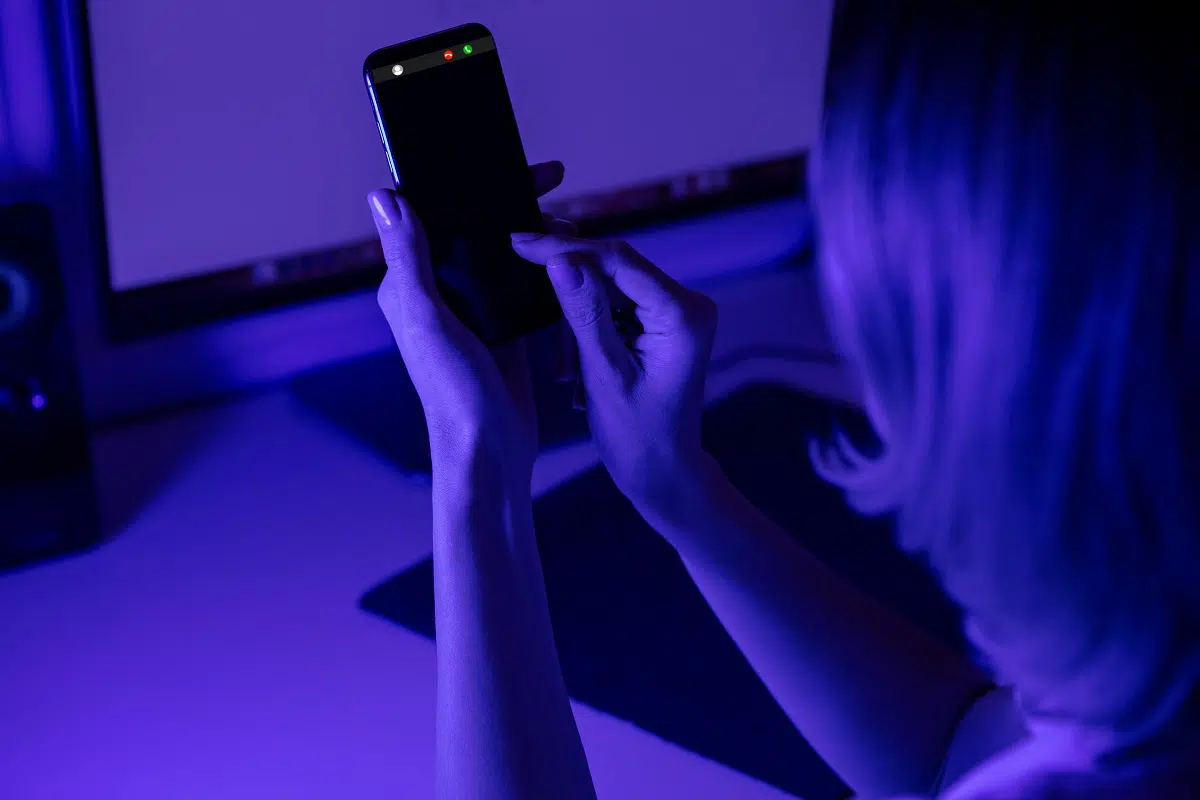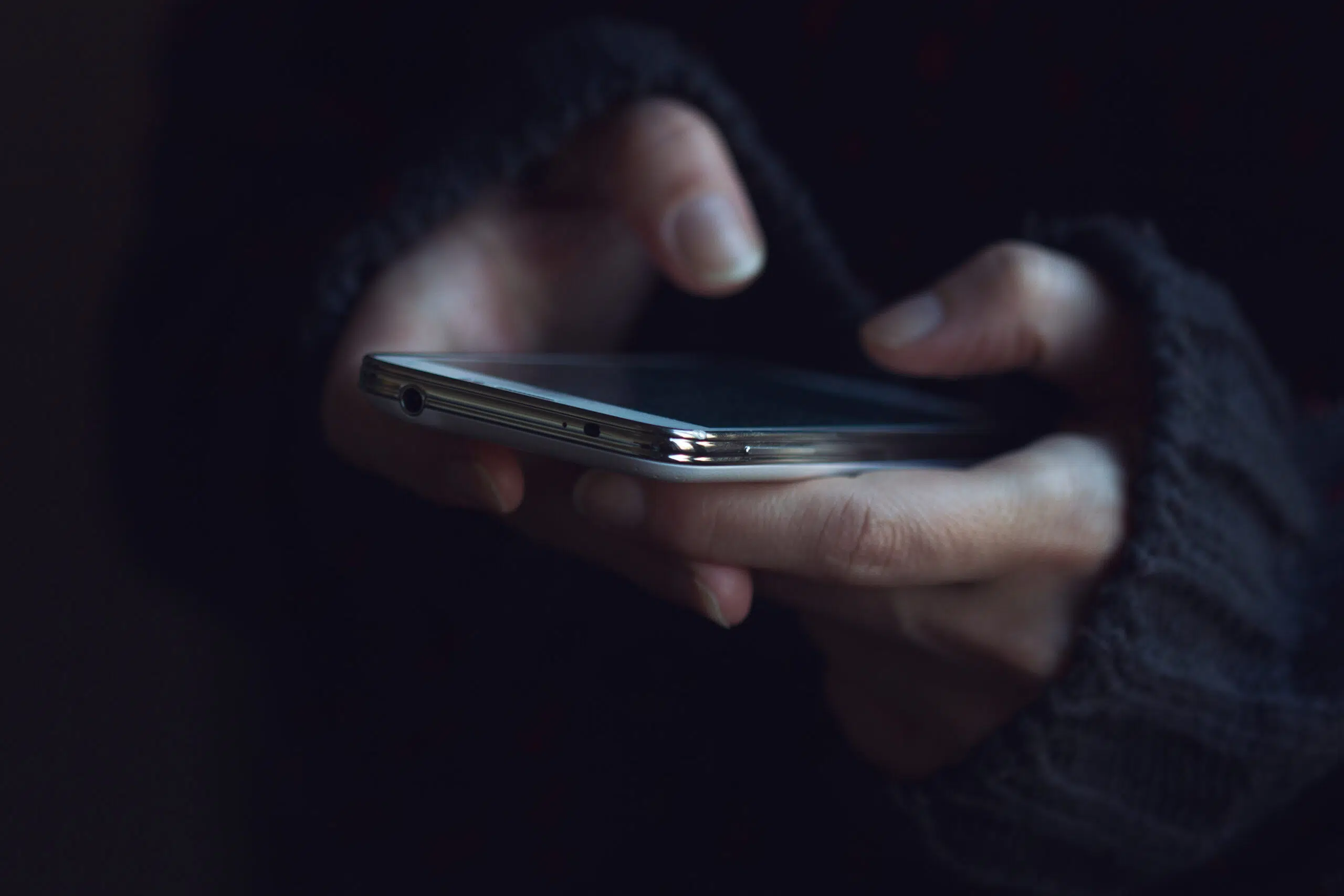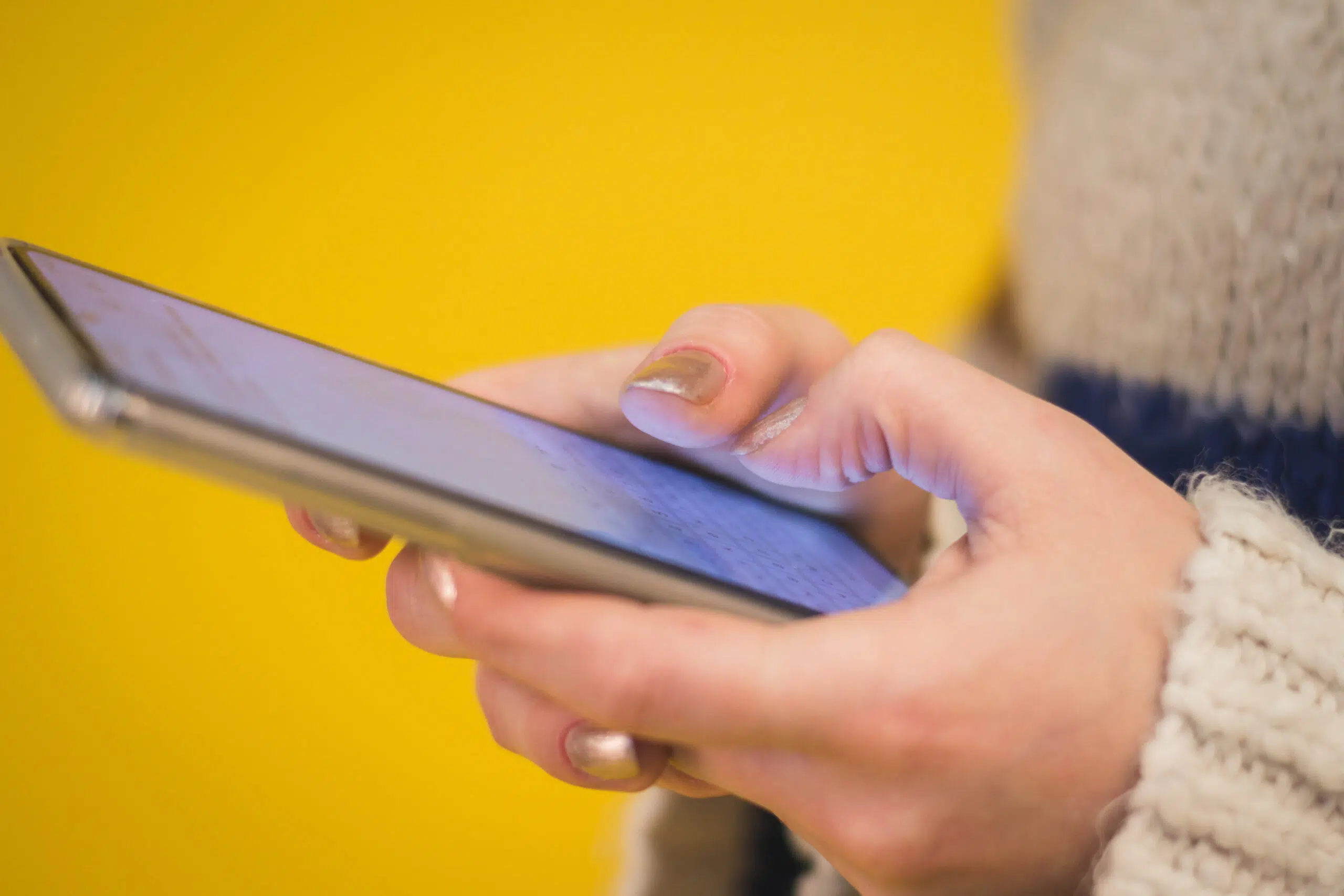Here’s how to fake or spoof a FaceTime call: A person can fake a FaceTime call number, and this is often done to get you to answer the call even though you are strangers as part of a scam.
In fact, it’s also possible to spoof or fake the incoming email address in addition to the number. Spoofing a FaceTime call typically requires specialized software, as it’s not simple to do.
So if you want to learn all about how someone fakes a FaceTime call, then this is for you. Let’s get started!
How Does Someone Fake a FaceTime Call?

We’re actually going to put a nice big pause on explaining FaceTime spoofing.
I need to give you a disclaimer instead.
Fake FaceTime calls are not explicitly illegal, but if it is used to defraud or scam someone, then it becomes an illegal practice.
Clearly, hiding who you are, even on a FaceTime call, can easily go down a dark road.
Because I don’t want to promote nefarious behavior (and because I definitely don’t want to be liable), I’m going to be careful about how we cover this topic today.
I am not going to teach you how to spoof a FaceTime call.
If you’re looking for step-by-step instructions, you’re in the wrong place.
But, if you want to learn about how spoofing works—and maybe learn how to mitigate spoofing issues along the way—then keep reading.
I’m going to be explaining exactly that from the perspective of how to combat scam FaceTime calls.
Can Someone Fake a FaceTime Number On a Call?

Now that the disclaimer is done, let’s get into this.
Can someone spoof a fake FaceTime number?
Yes. It’s possible to do, but it’s not easy.
In fact, I will suggest that spoofing a FaceTime number is considerably harder than spoofing a number on a regular phone call.
To really understand that, let’s talk about how spoofing works, but first, I need to explain that with FaceTime, then don’t necessarily have to spoof a phone number.
Other Contact Information
If you have an iPhone or iPad handy, you can go into your settings.
On that long list of settings, scroll down to FaceTime and tap on it. In the FaceTime settings, you’ll see a lot of options, and included in them is “Caller ID.”
You might have a phone number and one or more email addresses listed here. This setting allows you to choose what information people see when you contact them via FaceTime.
So, if you want to make calls using your email address instead of your phone number, you can.
Why am I telling you this? It’s because FaceTime spoofing isn’t necessarily phone number spoofing. You could spoof the email address instead.
For the most part, I’m going to separate these concepts and talk about phone numbers and email addresses separately. I wanted to take a moment so you can understand why both discussions are necessary.
If you can spoof an email address, it’s very easy to change that setting, and then you don’t have to worry about disguising your phone number.
The reverse is also true.
Also: FaceTime: Calls Automatically End?
How Does Fake FaceTime Calling Work? (2 Ways)

Now that we’ve covered a few concepts, let’s talk about spoofing when using FaceTime.
How could someone fake their contact information?
In general, FaceTime spoofing works via the same concepts as any other type of spoofing.
You need to use software to communicate with the FaceTime infrastructure and convince it that you’re calling from an Apple ID other than your own.
Let’s really harp on that for a moment. When you’re spoofing FaceTime, the Apple ID is what matters the most—not the phone number.
If you can trick Apple’s systems, then you can call from a fake phone number or email address. Either is a viable way to spoof FaceTime.That’s a general concept, but how does it actually work?
#1 Software Solutions For Fake FaceTime

Explaining to you how spoofing software functions at a fundamental level is beyond the scope of today’s conversation.
It gets pretty deep. To keep things simple, I can tell you that people can make software that will accomplish genuine spoofing on FaceTime.
Here’s the essence of how it works. You install the software package on your phone or tablet (or Mac computer).
You then run that software, and from that software, you can control FaceTime.
So, when you’re using the spoofing program to control FaceTime, it sends signals through the FaceTime app that trick the Apple systems into thinking you are someone you aren’t.
The software itself is exploiting things in the signal processing or routing rules of FaceTime (both are viable ways to accomplish spoofing).
So, as long as you use your spoofing software, the trick works.
That’s really all you need to understand about the process. Well-designed software is performing the spoof.
#2 Jailbreaking To Fake Facetime Calls

It’s worth noting that you can’t find real spoofing software for FaceTime on the App Store.
Apple does a lot of quality control, and they don’t exactly want to promote FaceTime scam calls on their own ecosystem.
So, if you want to run this kind of software, you have to get it from somewhere else, but that’s not entirely easy.
Apple sets up iOS devices in a way that you can’t exactly install any old program on your phone or tablet. For the most part, you can only get apps from the App Store.
That means that anyone who wants to fake a FaceTime call is going to have to jailbreak their phone.
Jailbreaking is when you fundamentally change the phone’s operating system. This voids any warranties and more or less breaks Apple’s control over the device.
When that’s done, it’s possible to install just about anything you want on the phone. Please note that I am not suggesting you jailbreak your phone.
While jailbreaking is legal and not inherently a bad idea, it comes with risks, and you very much can ruin a device through jailbreaking.
It’s also worth noting that you can do all of this with a Mac computer, and then you don’t have to jailbreak the Mac.
I’m glossing over that to keep things simple, but any Mac computer could conceivably download and install software that would enable FaceTime spoofing.
Also: If you are having any Facetime connection issues, learn the top solutions in our detailed article here.
What Are Other Ways People Try to Fake FaceTime Contact Information? (2 Tactics)

Hopefully, it’s clear now that fake FaceTime calling isn’t exactly simple, and that’s why it doesn’t happen nearly as often as general phone call spoofing.
Later, I’ll explain some of the things Apple does to make things even more challenging.
Because faking Facetime calls is challenging, a lot of people try to use alternatives instead.
Rather than genuinely spoofing a phone number or email address, they use other techniques to try to FaceTime you and convince you that they are someone else.
#1 Compromising Apple ID Accounts

Rather than spoof an Apple ID, it’s possible to directly take over an account.
We’ll use a hypothetical example to make this easier to follow.
Let’s say you get a call from a friend.
When you answer the FaceTime call, it’s clearly not your friend, and someone is trying to sell you something.
This is hardly the only way fake FaceTime calls happen, but it’s the example we’re going with for now.
So, you think someone spoofed your friend, and you hang up and try to FaceTime them yourself.
When you do, the stranger answers again.
You just discovered that their account wasn’t spoofed; it was hacked.
Brute force hacking an Apple ID is not very easy to do, but with phishing scams and other things, accounts are compromised all the time, sometimes through a fake Facetime call.
After some investigating, you and your friend realize that she opened an email she thought was from Apple.
When she verified her ID, she unwittingly gave her login credentials to the scammer, and they were able to take over her Apple ID.
Using techniques like this, it is often easier to hack an Apple ID than to spoof the account information.
For the scammer, the end result is still the same.
They can contact people from trusted numbers (or emails) and try to run their scam with calls on FaceTime.
#2 Using Fake Accounts

Still, there’s an easier option than hacking Apple IDs.
Scammers can also simply use fake accounts for FaceTime calls.
Let’s use the same example from before, but this time, there’s one little difference.
You get an incoming FaceTime call, and the email address on it looks like your friend’s.
But, the incoming call notification doesn’t have your friend’s picture that you added to her contact card on your phone.
Still, it’s close enough that you wonder if maybe she lost her email address or something, so you answer.
It’s clearly not her on the other end of the call, so you hang up.
Here’s what happened. The scammer wants you to answer the call.
So, they sent a bunch of emails to Apple ID holders.
Your friend responded, but didn’t give them any vital information this time.
Instead, because there was any response, the scammers now know the exact email address of a legitimate Apple ID.
They can’t access that Apple ID directly, and they aren’t spoofing.
Instead, they make a new email address that is very, very similar to your friend’s, but it’s not quite the same (since every email address has to be unique).
It’s close enough that you recognize it, so you answer.
This isn’t really spoofing, but it is a fake FaceTime call you will want to be wary of.
They’re trying to gain your trust to get you to answer.
Technically, you could do the same thing with a phone number, but most people recognize when a phone number is off even by a single digit.
The person isn’t in your contacts, so you ignore the number.
Email addresses often have names or other things we recognize, and that’s why fake email accounts are more compelling and more frequently used.
How To Avoid FaceTime Scams
With the increasing popularity of FaceTime, scammers have found new ways to exploit unsuspecting users. Here are some steps to protect yourself from FaceTime scams:
- Verify Caller Identity: Always ensure you know the person you’re FaceTiming with. If you receive a call from an unknown number, be cautious and verify the caller’s identity before engaging.
- Avoid Sharing Personal Information: Never share personal or financial information over a FaceTime call, especially if the caller initiated the contact, in case it’s a fake.
- Update Regularly: Ensure that your device’s operating system and FaceTime app are updated regularly. Apple frequently releases security patches to address vulnerabilities.
- Use Strong Passwords: Ensure that your Apple ID password is strong and unique. Avoid using easily guessable passwords like “123456” or “password”.
- Enable Two-Factor Authentication: Turn on two-factor authentication for your Apple ID. This adds an extra layer of security, making it harder for scammers to access your account.
- Be Wary of Unsolicited Calls: If you receive an unexpected FaceTime call, especially from someone claiming to be from a business or government agency, be skeptical. Legitimate organizations will not typically contact you via FaceTime without prior notice.
- Report Suspicious Calls: If you receive a suspicious FaceTime call, report it to Apple and your local authorities. This can help prevent others from falling victim to the same scam.
- Educate Yourself: Stay informed about the latest scams and tactics used by fraudsters. Awareness is one of the best defenses against scams.
By following these steps and staying vigilant, you can enjoy the benefits of FaceTime while protecting yourself from potential scams.
How Does Apple Prevent FaceTime Spoofing? (4 Security Measures)

Whether we’re talking about literal spoofing or some of the alternative methods, the truth is that you probably get a lot more spam phone calls when compared to FaceTime calls.
That’s because fake FaceTime calling is a lot harder than spoofing a phone number.
In fact, Apple takes several steps to make this the case.
So, let’s talk about how Apple is fighting back against spoofing and what that might mean for you.
#1 Updates

If you recall, I explained that legitimate FaceTime spoofing requires software that can trick FaceTime or the Apple system.
Because software is needed for all of this, it means that Apple can look at spoofing, see how it works, and then design countermeasures to prevent it from happening again.
And, Apple in fact does this.
There are countless updates that do more things than I could hope to describe, but Apple does put effort into minimizing fake FaceTime calling, and updates make that easy.
When Apple catches wind of popular scam call software, they can make subtle changes to FaceTime itself that render spoofing software useless.
These updates help keep spoofing under control, and it’s arguably the most proactive thing that Apple does in regard to FaceTime spoofing.
#2 Phone Number Verification

Another important thing that Apple does is phone number verification.
What if instead of a fake FaceTime call, someone just created a new Apple ID and put your number as theirs?
Then, every time they make a FaceTime call, your number would show up on the incoming caller ID.
That would not be terribly fun for any of us, but Apple uses a simple countermeasure to prevent this.
When you put in a phone number for your Apple ID, Apple verifies it.
They send a text to the number you provided with a link.
You take the link, and then Apple knows for sure that you really are using the number you claim to use.
If a fake FaceTime caller tries to input your number, you’ll get the verification text instead of them, and their plan will fail.
It’s worth noting that this verification has value outside of preventing FaceTime scam calls, but regardless, it’s effective in this way too.
#3 Email Verification

If you’ve ever created an account for anything on the internet, then you’ve been through email verification.
It serves the same purpose as phone number verification, and it basically works the same way.
If a scammer wanted to create an Apple ID with your email address, then when they go through the process, Apple would send them a verification email.
As I said before, every email address is unique.
Since they put in your email address, you receive the verification email instead of them.
They can’t verify, so they can’t marry your email to their account.
It’s a simple solution, and it’s very effective.
#4 General Security

The last thing Apple does to fight number spoofing (among other things) is invest heavily in security.
Apple infrastructure is quite secure, even when compared to other major tech companies.
It’s very difficult to forcefully get into Apple systems, and that’s why fake FaceTime calling remains difficult.


